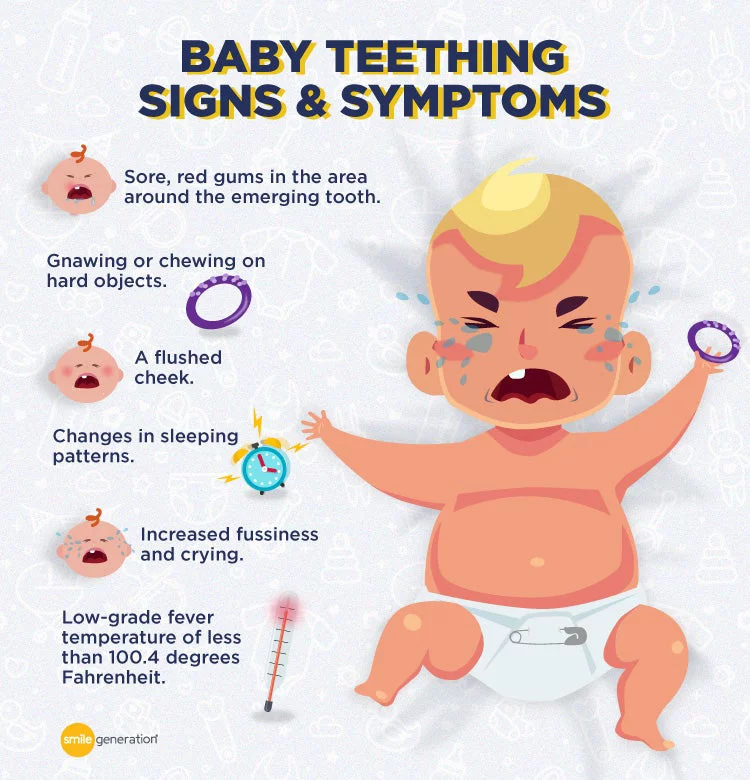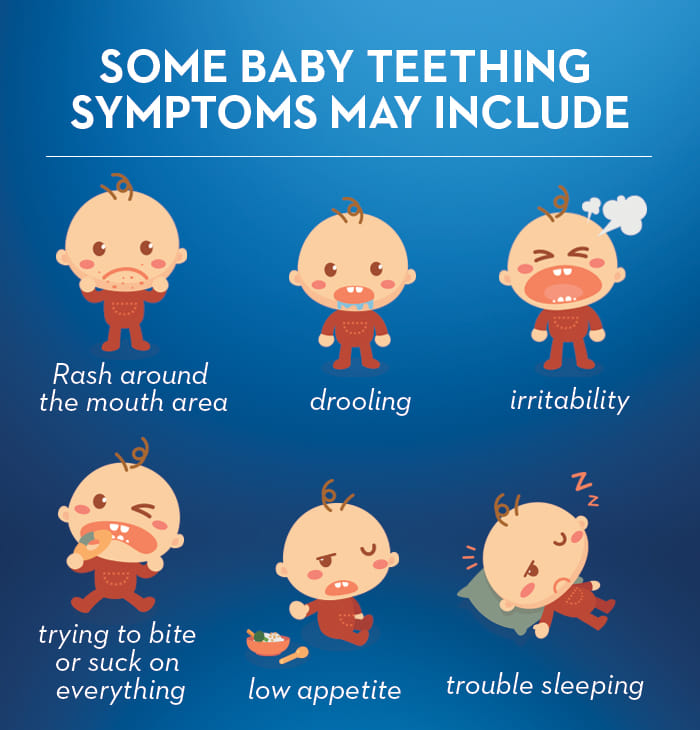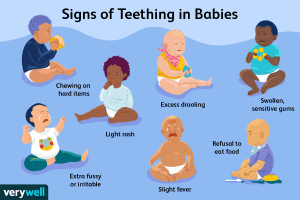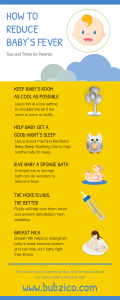Signs baby is teething in babies include excessive drooling and irritability. Other signs may include swollen gums and chewing on objects.
Teething is a natural process that all babies go through, but it can be a challenging time for both the baby and the parents. Understanding the signs of teething can help parents provide the necessary comfort and care for their little ones during this phase.
In addition to the common signs like drooling and irritability, some babies may also experience a low-grade fever or loss of appetite. Knowing how to recognize these signs can make the teething process smoother for everyone involved. We will explore the various signs that indicate a baby is teething and provide tips on how to help ease their discomfort.
Common Signs Of Teething
Teething can be a challenging time for both babies and parents. Recognizing the common signs of teething can help you better understand and support your little one through this uncomfortable phase.
Excessive Drooling
Babies often experience excessive drooling when they are teething. This is their body’s way of naturally soothing the discomfort caused by the emerging teeth. Keep a soft cloth handy to gently wipe your baby’s chin and prevent any skin irritation.
Irritability And Fussiness
During teething, babies may become more irritable and fussy than usual. The discomfort and pain in their gums can lead to increased crying and general crankiness. Providing extra cuddles and comfort can help soothe your baby during these episodes.
Swollen Or Sore Gums
Swollen and sore gums are common signs that your baby is teething. You may notice redness and sensitivity in the area where the new teeth are emerging. Offering a chilled teething ring or gentle gum massage can provide relief for your little one.
Chewing Or Biting On Objects
Another indication of teething is when babies start to chew or bite on objects more frequently. This behavior helps to alleviate the pressure and discomfort in their gums. Ensure that the items your baby chews on are safe and appropriate for teething.
:max_bytes(150000):strip_icc()/at-what-age-will-my-baby-start-teething-5085119_text-6f827b0d6c184a3f9cc934cf101596c2.png)
Lesser-known Symptoms
Teething can be a challenging time for both babies and parents, as the discomfort and symptoms associated with it can vary. While many are familiar with the common signs of teething such as drooling, irritability, and swollen gums, there are also lesser-known symptoms that parents should be aware of. These symptoms can often be mistaken for other issues, so it’s important to recognize them in order to provide the necessary comfort and care for your teething baby.
Ear Pulling
Babies may pull or tug at their ears during teething. This behavior can be a result of the pain and discomfort in their gums, which can radiate to their ears. While ear pulling is not exclusive to teething, it can be an additional indicator when paired with other teething symptoms.
Changes In Eating Or Sleeping Patterns
Teething can disrupt a baby’s eating and sleeping routines. They may become fussy during feeding times or have difficulty falling asleep. These changes are often attributed to the discomfort they experience while teething.
Mild Fever
A slight increase in body temperature is another lesser-known symptom of teething. While it’s not a high fever, it’s common for babies to experience a mild fever during the teething process. This is the body’s natural response to the inflammation and irritation caused by the emerging teeth.
Rash Around The Mouth
Teething can cause a rash or irritation around the mouth due to the excessive drooling that often accompanies the teething phase. The constant presence of saliva on the skin can lead to redness and chafing, requiring gentle care and attention.
Coping Strategies For Teething
Teething can be a challenging time for both babies and parents. However, there are effective coping strategies that can help ease your little one’s discomfort. Here are some tried and tested methods to help soothe your teething baby:
Use Of Teething Toys
Teething toys are a great way to provide relief for your baby’s sore gums. Choose BPA-free, textured toys that are designed to be chewed on.
Gentle Massage Of Gums
Gently massaging your baby’s gums with a clean finger can help alleviate teething pain. Ensure your hands are clean before offering this soothing technique.
Chilled Teething Rings Or Washcloths
Chilled teething rings or damp washcloths placed in the refrigerator for a short time can provide cooling relief for your baby’s irritated gums.
Over-the-counter Pain Relief Options
If your baby is in significant discomfort, you may consider using over-the-counter pain relief options specifically formulated for teething babies. Always follow the recommended dosage and consult with your pediatrician if unsure.
When To Consult A Pediatrician
If your baby is experiencing teething symptoms, it is important to know when it is necessary to seek medical advice from a pediatrician. While teething is a common milestone for infants, there are certain signs that may indicate a more serious issue requiring professional attention.
Persistent High Fever
- Monitor your baby’s temperature regularly.
- Consult a pediatrician if the fever persists beyond 24 hours.
Severe Diarrhea Or Vomiting
- Watch for excessive diarrhea or vomiting.
- Contact a healthcare provider if these symptoms are severe or prolonged.
Refusal To Eat Or Drink
- Observe if your baby is refusing food or liquids.
- Seek medical advice if this refusal persists for an extended period.
Unusual Rashes Or Blisters
- Check for any unusual skin rashes or blisters.
- Consult a pediatrician if these skin issues appear concerning.
Always trust your instincts as a parent and seek professional guidance if you have any doubts or concerns about your baby’s teething symptoms.
Home Remedies And Myths
Discover natural teething remedies and debunked myths to recognize signs that your baby is teething. Learn about practical ways to provide relief during this developmental stage.
Teething can be a difficult time for babies and parents alike. With all the discomfort and fussiness, it’s natural for parents to want to find ways to ease their child’s pain. While there are many over-the-counter remedies available, some parents prefer to try home remedies or myths that have been passed down through generations. Here are a few popular options, including amber teething necklaces, frozen foods for teething relief, teething gels, and teething tablets.
Amber Teething Necklaces
Amber teething necklaces have become increasingly popular in recent years. The idea is that the amber beads release an oil that is absorbed through the skin and acts as a natural pain reliever. However, there is no scientific evidence to support this claim. In fact, the American Academy of Pediatrics advises against the use of any type of jewelry or teething necklace due to the risk of choking or strangulation. It’s best to stick to other methods for teething relief.
Frozen Foods For Teething Relief
Many parents swear by frozen foods for teething relief. The cold temperature can help numb the gums and reduce inflammation. However, it’s important to choose the right foods. Hard foods like carrots or apples can be a choking hazard, so it’s best to stick to softer options like frozen bananas or pureed fruits and vegetables. You can also try freezing a washcloth or teething toy for your baby to chew on.
Use Of Teething Gels
Teething gels, like Orajel, are a popular choice for parents looking for quick relief. These gels contain a numbing agent that helps to reduce pain and discomfort. However, they can also be dangerous if not used properly. The FDA warns against using teething gels that contain benzocaine, as it can lead to a rare but serious condition called methemoglobinemia. Always consult with your pediatrician before using any type of teething gel.
Teething Tablets
Teething tablets, like Hyland’s Teething Tablets, have also gained popularity in recent years. These tablets contain homeopathic ingredients that are believed to relieve teething symptoms. However, the FDA has issued a warning against these tablets due to the risk of serious side effects, including seizures and difficulty breathing. It’s best to avoid teething tablets altogether and stick to safer methods of teething relief. In conclusion, there are many home remedies and myths when it comes to teething relief. However, it’s important to do your research and consult with your pediatrician before trying any new method. Stick to safe options like frozen foods or teething toys, and always avoid anything that could pose a choking hazard. Your baby’s safety and comfort should always come first.

Teething Timeline
Understanding the teething timeline can help parents anticipate and manage their baby’s discomfort. Here we explore when teething typically begins, the order of teething, and the completion of the teething process.
When Teething Typically Begins
Babies usually start teething around 6 months of age, but it can vary. Some babies may begin teething as early as 3 months or as late as 12 months.
Order Of Teething
The first teeth to emerge are usually the lower central incisors, followed by the upper central incisors. Next, the lateral incisors, first molars, and canines come in, with the second molars appearing last.
Completion Of Teething Process
By the age of 2 to 3 years old, most children will have a full set of 20 primary teeth. The teething process can cause discomfort, but it is a natural and essential part of a child’s development.

How Can I Tell If My Baby Is Teething?
Common signs of teething in babies include excessive drooling, irritability, swollen gums, and chewing on objects.
What Do Baby Teeth Look Like When Teething?
Baby teeth when teething appear as small, white buds emerging through the gums. They may look pearly white, and some children may experience redness or swelling around the area.
How Long Do Babies Show Signs Of Teething Before The Tooth Breaks Through?
Babies show signs of teething a few days to a few months before the tooth breaks through. The process varies for each baby, but it usually takes a few days for the tooth to emerge after the first signs of teething.
Is My Baby Sick Or Teething?
Determining if your baby is sick or teething can be tricky. Look for fever, irritability, and drooling. Always consult a pediatrician for proper diagnosis.
Conclusion
If your baby is showing signs of irritability, drooling, or biting, they could be teething. Keeping them comfortable with teething toys and soothing remedies can help. Remember, every baby is different, so stay patient and provide comfort during this challenging time.
Trust your instincts and seek professional advice if needed.




